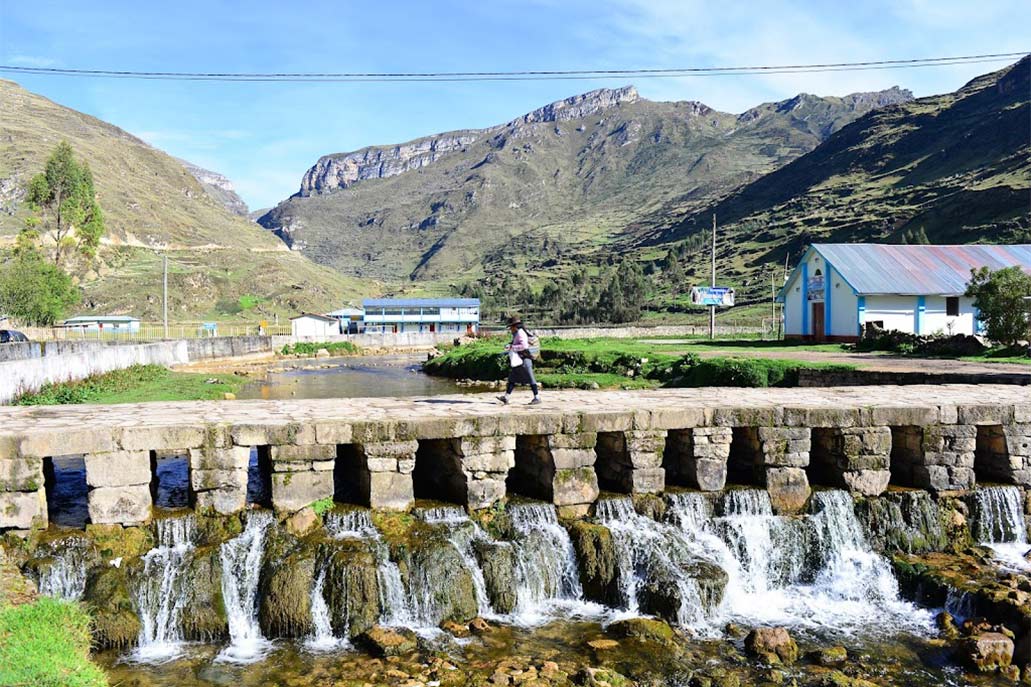The Inca Bridge
The Inca Bridge is a construction that delimited the border of Machu Picchu on the west side. It is a bridge made of strong and solid tree trunks that, according to the researchers, could be removed in case of invasions. Currently to get there you have to do a hiking route of only 30 minutes on average. For this reason, not many visitors know this site.

Content
The Inca Bridge of Machu Picchu
The Inca Bridge of Machu Picchu is a wooden construction located on a narrow path next to a granite mountain and a ravine. The bridge is supported by a rustic stone construction on the edge of the abyss. Due to the difficult geography where it was built, it is believed that it served as the limit of Machupicchu with the west side. In case of invasion, the Incas could remove the bridge and prevent access to the citadel.
The route to the Inca Bridge
The Inca Bridge is in the western sector of Machu Picchu. To get there you must take a walk of approximately 30 minutes (1 kilometer of route). The control booth to visit the bridge is inside Machu Picchu, about 200 meters from the Guardian’s House sector (follow the signs). There tourists must register and start the walk.
Currently it is not allowed to cross the bridge as it represents a danger for visitors. It is only allowed to appreciate it from a safe distance. The return path follows the same section as the outward journey. At the control booth, tourists must sign out of the place. After visiting the Inca Bridge, tourists can complete their tour of Machu Picchu.
The Incas and the bridges

The Incas built hundreds of bridges in their main citadels as well as throughout their vast territory. These were made mainly: of trunk, stone, oroyas, icchu (hanging bridges) and floating bridges.
Log Bridges – Solid bridges spanning short spans. The Incas used two or three sturdy wooden logs. Sometimes they used stone foundations to make the foundations more resistant. A clear example is the Inca Bridge of Machu Picchu.
Stone bridges – Bridges formed with stone blocks in a rustic way. The set of stones are able to unite an empty space through which people manage to walk. Due to the passage of time, few bridges of this type have remained in good condition.
Oroyas – Bridges formed by a basket that slides down a sturdy cable (made of plants or herbs). It was ideal for crossing food or people across rivers. Today they are still used in some towns in the mountains and jungle of Peru.
Hanging bridges – Bridges made with hundreds of icchu ropes twisted together. They were used to cross rivers. These bridges were very useful for the passage of people with heavy loads. However, they had to be renewed from time to time. Today a great example is the Queswachaka Bridge in Cusco.
Floating bridges – Bridge that allowed to pass from one shore to another across a river. It was a raft made of very resistant cattails that could stay afloat in the water. Until today it is used in some towns of the country.
More information
The Inca Bridge of Machu Picchu can be visited with any entrance to Machu Picchu. It is open from 7 in the morning until 4 in the afternoon.
Because the roads leading to the Inca Bridge are close to terrifying cliffs, it is recommended to be careful and always go to the side near the mountain (away from the cliffs).
On the route to the Inca Bridge it is not allowed to take photos near dangerous areas. Neither use headphones or carry selfie sticks. It is recommended to be accompanied by another person.
Like the Inca Bridge, the other short free-access hiking route in Machu Picchu is the Intipunku (Sun Gate) trek. This route is more demanding. It takes 2 hours to reach the top.